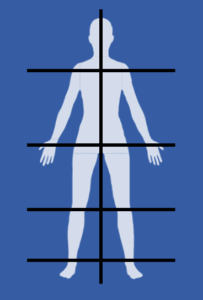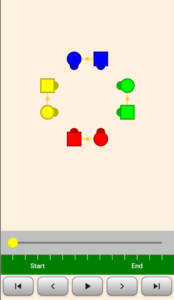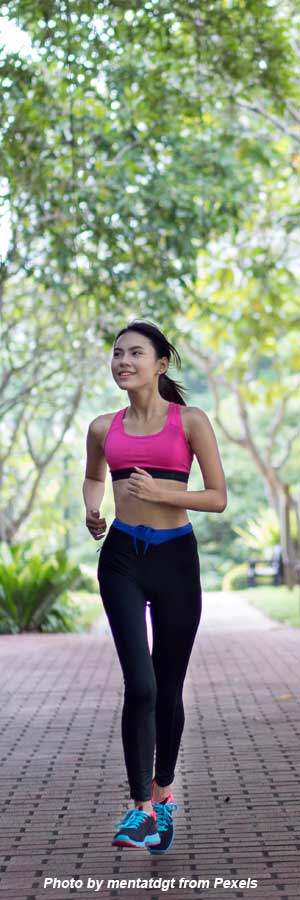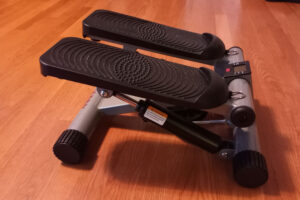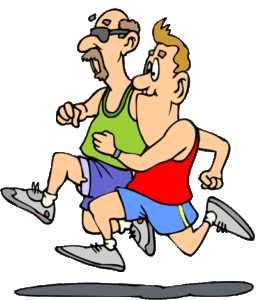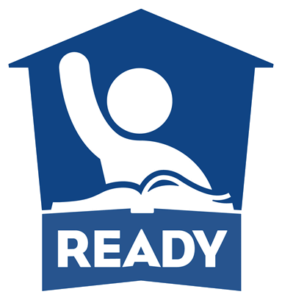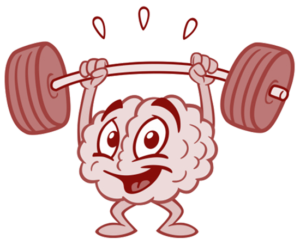As noted in an earlier post, my exercise habit took a hit when we all went into COVID-19 lockdown. I got back on the wagon though the purchase of an inexpensive mini-stepper device, resistance bands, and some good advice from James Clear’s book Atomic Habits. I’ve since made a substantive addition to my home gym.
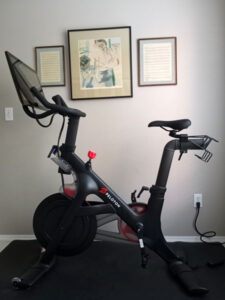 My husband and I purchased a Peloton exercise cycle a year ago with money from my mother’s estate. The unit was installed on her birthday, and I think about her every time I use it! My nephew got us excited about Peloton through the witness of he experience with it. He lost 40 pounds and got in the best shape of his life! Cycling classes are available from a variety of instructors for all skill levels. If those classes don’t float your boat, you can take virtual cycling rides all over the world while listening to music. In both cases, the rider sets the amount of time for the workout. I can also use my monthly membership for strength training, pilates, stretching, yoga, meditation, and other classes.
My husband and I purchased a Peloton exercise cycle a year ago with money from my mother’s estate. The unit was installed on her birthday, and I think about her every time I use it! My nephew got us excited about Peloton through the witness of he experience with it. He lost 40 pounds and got in the best shape of his life! Cycling classes are available from a variety of instructors for all skill levels. If those classes don’t float your boat, you can take virtual cycling rides all over the world while listening to music. In both cases, the rider sets the amount of time for the workout. I can also use my monthly membership for strength training, pilates, stretching, yoga, meditation, and other classes.
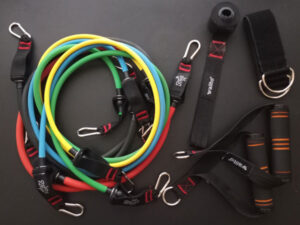 I’ve had great success with resistance bands for strength training. (I’d been concerned that they wouldn’t be all that effective.) I’ve got the perfect door jambs in which to anchor the bands when doing upper and lower body strength training. The bands enable me to add resistance flexibly when a particular exercise becomes too easy. Friends and family have taken note of the positive changes in my body. And it all came with a very modest investment and the convenience of working out at home.
I’ve had great success with resistance bands for strength training. (I’d been concerned that they wouldn’t be all that effective.) I’ve got the perfect door jambs in which to anchor the bands when doing upper and lower body strength training. The bands enable me to add resistance flexibly when a particular exercise becomes too easy. Friends and family have taken note of the positive changes in my body. And it all came with a very modest investment and the convenience of working out at home.
I still miss the gym – the range of equipment offered and the fellowship of classmates. But I’ve come to really appreciate the value of my home gym.
For one thing, it’s much easier to combat the loud and persistent voice inside my head that doesn’t feel like working out. I hear it every single day. And every single day I have to tell it to be quiet and just get on with the day’s fitness routine. Once I get going, it pretty much shuts up absent the occasional thought: “Do we really have to do all of the exercises? Having a home gym makes things easier. I don’t have the added hurdle of driving to a gym, thereby taking a weapon away from the devil on my shoulder. Everything is right here. I just have to do it.
I can choose the time of day when I exercise without worrying about how busy the gym might be or how much traffic there might be getting there. And it’s easy to break up an hour long strength training set into two pieces if my schedule makes it convenient to do so. Sometimes, it’s what I do to appease the part of me that doesn’t want to do it: “Just get half done now and we’ll do the rest later!”
I have several options at the house to keep me entertained while doing my workout. The lively music and commentary on the Peloton spin classes make the time go fast. But if I’m not in the mood, I can just ride while reading a book in my delightfully quiet exercise room. For stretch and strength training, I generally listen to music on my Echo Dot or stream a podcast. My favorite podcasts these days include The Happiness Lab with Dr. Laurie Santos, Choiceology with Dr. Katy Milkman, and A Slight Change of Plans with Dr. Maya Shankar.
I’ve still got my little stepper in case I feel like staying a bit active while watching TV. It’s really handy when I’m feeling a little sleepy and need a short workout to get the juices flowing.
